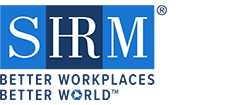With a growing demand for remote work, organizations from all over the world have the chance to go beyond the talent pool of their home country and incalculably expand it. While business owners were trying to utilize this scenario at its best, Employer of record (EOR) came as a boon to them and enabled global expansion and remote talent to go hand in hand. Global expansion and EOR services became two peas in a pod.
Now, for a model like EOR which is built with hundreds of compliance and multiple brains put together, snag is the last thing one can expect. However, as impossible as it may seem, as with any other system, EOR services couldn’t escape the minor concerns creeping into a perfectly built model.
With time, business owners aspiring to expand their teams globally started to realize this growing concern and became desperate to hunt for solutions to these concerns, not to mention that they didn’t want to let go of an immaculate model like Employer of Record for their team expansion. This blog is dedicated to all those business aspirants who dare to dream big and do not want trivial hustles to come in their way of success.
What is Employer of Record (EOR)?
An employer that handles payroll, human resources, and legal requirements for its staff is an Employer of Record (EOR) service provider. The EOR serves as the employer of record, taking care of responsibilities like tax withholding, compliance, and benefits administration so that client businesses can concentrate on their primary business operations and workforce management flexibility.
Employer of Record model typically serves as a bridge between your company and the local workforce of the country. They ease the business processes and day-to-day workflow of your organization by taking care of administration.
Employer of Record also assists you with the brand establishment and reputation management of your organization by propagandizing your brand value among the local market and local talent pool.
Concerns and Solutions Over an EOR Model
Gaps in Local and International Law:
The complex interplay between local and international laws can be a real head-scratcher in the EOR model. The EOR is responsible for keeping you in compliance with local regulations and solving the missing pieces of a puzzle in the ever-changing landscape of international laws. However, these gaps can expose your organization to potential risks if not addressed promptly.
Solution
Regularly review local and international laws. Keep your legal team well-informed and collaborate closely with your EOR to address any legal gaps. You must swiftly adapt to changing legal landscapes to mitigate risks.
Understanding Legal Complexities:
According to a recent study by Deloitte, 62% of businesses using the EOR model cite the complex web of local labor laws and regulations as one of their top challenges. Every country has its own unique set of labor laws, tax regulations, and employment standards, making compliance all the more confusing. An EOR company has to stay on its toes, keeping tabs on these laws and ensuring that employment arrangements tick all the local legal boxes. There’s absolutely no room for mistake, one wrong step, and you might end up in a legal whirlwind, facing penalties or even the dreaded business license revocation.
Solution
Collaboration is the key here. Establish a strong partnership with your EOR, and ensure they have a robust legal team well-versed in local and international labor laws. Regularly review compliance and legal matters together, and invest in ongoing training to keep everyone informed and updated on legal changes.
Cracking the Model Compatibility Puzzle:
Companies often underestimate the importance of ensuring their culture and processes mesh coherently with the EORs. If the company culture and EOR processes clash, it can create friction and disrupt the harmony of your operations. This can lead to dissatisfaction among employees and hamper productivity.
Solution
Ensure that the EOR’s company culture and processes align with your own. Work closely with the EOR to integrate their processes seamlessly into your operations. Foster a harmonious culture by encouraging open communication and compromise.
The Critical Transfer Risk
The most important phase of a transfer is when the crucial resources of your organization like assets, data, and documents are in transit between your organization and the employer of record model. The transfer of sensitive information can be filled with danger if not handled with care. Mishandling data during the transition can result in data breaches or crucial information falling into the wrong hands.
Solution
Ensure that your EOR company enforces strict protocols during the transition to safeguard sensitive information. Conduct data security audits during the transfer process, and ensure that all the valuable resources are handled securely.
Limited Control Over HR Functions:
According to research by the Society for Human Resource Management (SHRM) found that 41% of organizations utilizing EOR services expressed concerns about their lack of control over HR functions. Outsourcing HR functions to an EOR company might feel like sometimes things are going out of your hands. This can be a sticking point for companies that thrive on having a say in everything. With an EOR in the mix, you might be less involved in the hiring, onboarding, and employee engagement process. This fear of missing out can lead to issues with your EOR in the long run
Solution
It’s important to set clear boundaries about the HR activities that your EOR company would take care of. Exclusively define the roles and responsibilities in the EOR contract. Maintain open channels of communication with your EOR to stay informed and intervene when necessary. Make your hiring, onboarding, and performance management expectations crystal clear from the outset.
The Hidden Costs:
A report by PwC highlights that while 78% of companies see cost savings as a primary motivation for using an EOR, they often underestimate the potential hidden costs. Primarily reducing costs is the aim, but unforeseen expenses might creep in like buying a pig in a poke. Surprise fees or unexpected expenses might pop up, damaging your cost-saving plans. So, make sure you’ve got a firm grip on your EOR’s pricing structure and what services they’re offering to avoid financial curveballs.
Solution
Transparency is the key. Before engaging with an Employer of Record model, request a detailed breakdown of all costs and fees. Establish clear expectations regarding what is included and what is not. Regularly audit your EOR’s financial dealings to avoid any unpleasant surprises.
Longer Notice Periods:
Long notice periods are a common aspect of Employer of record model agreements, and they can feel like a double-edged sword. On one hand, they provide stability, allowing both parties to plan. However, an overly long notice period can be a stumbling block if you need to adapt quickly to changing circumstances. It can also act as a repulsive magnet scaring away candidates from joining the organization.
Solution
Negotiate reasonable notice periods that allow for flexibility. Avoid overly lengthy commitments that can hinder adaptability. Set clear terms for changes and terminations in the agreement.
Limited Long-term Strategy:
A survey conducted by Gartner revealed that 72% of companies were skeptical about relying on EOR services as a long-term solution to rapid workforce expansion. They were further confused about putting all the eggs in one basket and missing out on developing in-house expertise in employment matters, which might make them heavily dependent on the EOR in the long run.
Solution
Use the Employer of record model strategically. To look at it as a long-term solution, consider investing in training and development to build your in-house expertise. Strike a balance between short-term scalability and long-term
Remunance to the Aid
Remunance sets the record of being the “Employer of Choice” in India, creating a sense of confidence and inspiration in both the employers expanding their business in India and the local talents hired for the respective foreign organizations. Remunance carefully addresses every major and minor concern of the business owners to instill a sense of reliability in their minds and assist them in expanding their business in India without worry.

Employers of Record operations, Remunance has gained a global clientele spread across 16 countries and proudly growing each day.



 Book a Demo
Book a Demo